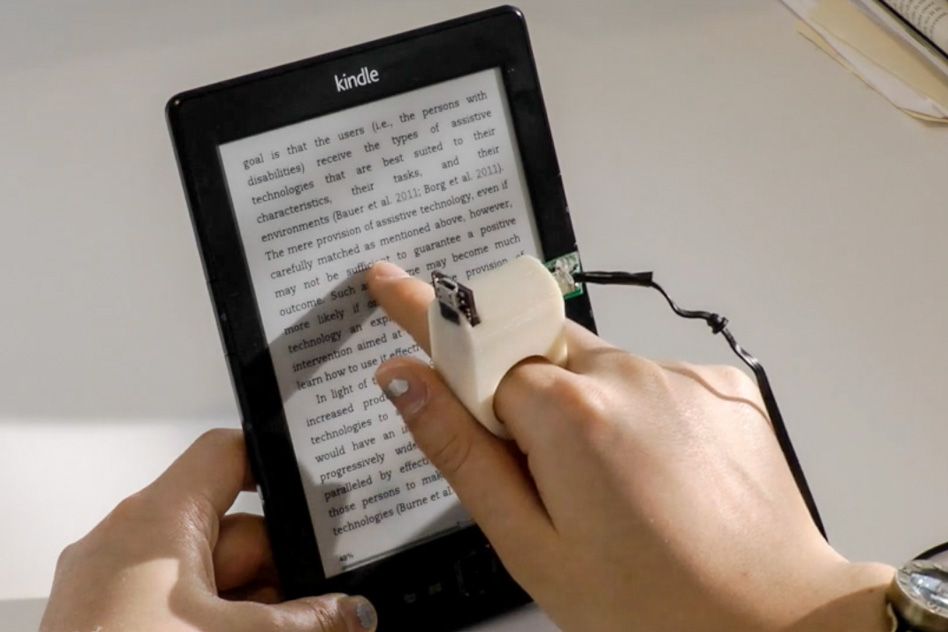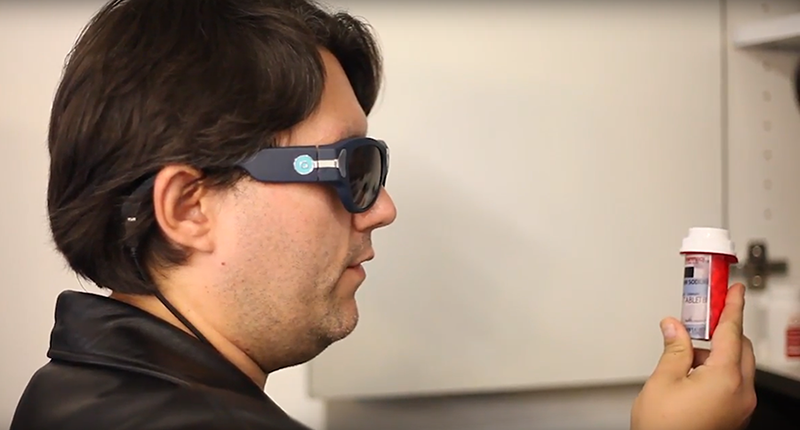Voice-Activated Assistive Devices: Enabling the Visually Impaired
Voice-Activated Assistive Devices: Enabling the Visually Impaired
Blog Article
Enhancing Lives With Advanced Assistive Tools for the Blind
The integration of sophisticated assistive tools for the blind is transforming exactly how individuals experience their surroundings and connect with their neighborhoods. What does this development mean for the future of assistive modern technology and its function in empowering individuals?
Summary of Assistive Instruments
Assistive devices for the blind incorporate a varied variety of technologies and tools developed to enhance independence and improve the top quality of life for people with aesthetic impairments. These gadgets deal with various demands, from navigating and mobility to interaction and daily job management.
Among the main groups of assistive gadgets includes mobility help, such as white canes and guide canines, which assist individuals navigate their environments securely. Digital traveling help, outfitted with sensing units and audio feedback, also play a significant duty in flexibility improvement.
Additionally, gadgets that help with day-to-day living tasks, such as adaptive kitchen devices, Braille tags, and speaking watches, encourage individuals to perform jobs independently. Interaction aids, including display visitors and Braille displays, promote accessibility to info and make it possible for individuals to engage efficiently with the electronic world.
Additionally, low-tech solutions like magnifying glasses and large-print materials continue to be crucial for numerous customers. Collectively, these assistive devices offer not only as useful devices but likewise as essential enablers of autonomy, cultivating higher engagement in a world that usually prioritizes sighted experiences. Their assimilation right into day-to-day life is crucial for promoting inclusivity and boosting overall health for those with visual impairments.
Cutting-edge Technologies being used
Technology in innovation has actually considerably transformed the landscape of tools available for individuals with aesthetic problems. Amongst one of the most significant improvements are wise glasses integrated with increased truth, which provide real-time navigation assistance and things acknowledgment. These devices utilize progressed video cameras and expert system to provide auditory hints, improving the customer's spatial recognition and autonomy.
Additionally, mobile applications have become effective resources, enabling customers to identify money, reviewed message aloud, and navigate unfamiliar atmospheres with verbal instructions. Devices such as Braille displays and refreshable Braille gadgets remain to evolve, providing seamless connection with computers and smartphones, therefore boosting communication and access to details.
Wearable innovation, including smartwatches geared up with voice-activated functions, further empowers individuals by facilitating fast access to alerts and signals without calling for visual engagement. Responsive maps and 3D printing are additionally gaining grip, using concrete depictions of rooms that help in alignment and wheelchair training.
Jointly, these innovative modern technologies not only improve the every day lives of visually damaged individuals but likewise foster higher self-reliance, inclusivity, and engagement with the broader neighborhood, consequently reshaping assumptions of availability. (Braille displays and notetakers)
Individual Stories of Empowerment
Empowerment frequently arises from personal experiences that highlight the transformative influence of modern technology on individuals with aesthetic disabilities. Take, as an example, the story of Sarah, a young musician who regained her interest for paint through making use of a clever cane geared up with obstacle discovery. This device not only facilitated her movement however instilled a newfound confidence, permitting her to browse public areas separately and seek her creative ventures.

These stories underscore the extensive results that progressed assistive tools can carry life. By enabling low vision aids people to get over obstacles, modern technology fosters a sense of autonomy and self-respect. Such empowerment tales function as a testimony to the potential of advancement, showing how the right devices can significantly boost high quality of life and open doors to new possibilities for those with aesthetic impairments.
Advantages of Advanced Solutions
Exactly how can advanced options fundamentally enhance the lives of people with aesthetic impairments? The assimilation of innovative technology right into assistive devices this website considerably transforms day-to-day experiences for those influenced by vision loss. These advanced remedies provide unprecedented autonomy, making it possible for users to navigate their settings with self-confidence. Instruments such as clever walking canes equipped with sensing units, navigating apps, and wearable technology are developed to supply real-time responses, boosting spatial recognition and decreasing the dangers associated with mobility.
Moreover, advanced assistive innovations foster social incorporation by promoting interaction and communication. Voice-activated devices and applications allow people to access details and involve with their surroundings individually, breaking barriers that formerly hindered their involvement in educational, expert, and social setups.
In enhancement, the customization and flexibility of these services cater to the diverse needs of individuals, therefore improving their total lifestyle. Improved capability, such as item acknowledgment and text-to-speech capabilities, empowers people with visual problems to carry out jobs that they might have as soon as found challenging. Inevitably, advanced assistive technologies not only enhance independence and safety however also advertise self-respect and self-respect, allowing customers to lead meeting lives.
Future Fads in Assistive Tech
As modern technology remains to evolve, the landscape of assistive gadgets for the blind is poised for exceptional advancements that will certainly even more improve access and freedom. Emerging fads in assistive innovation suggest a shift toward boosted combination of fabricated knowledge (AI) and artificial intelligence, allowing devices to adapt to specific review user needs in real-time. These innovations are expected to help with more intuitive navigation systems that can determine challenges and give audio responses, significantly enhancing exterior movement.
In addition, the advancement of wearable tech, such as wise glasses geared up with enhanced truth, will certainly enable users to get contextual info concerning their environments, consequently enhancing their spatial understanding. Innovations in haptic technology assurance to develop tactile comments gadgets, enabling users to perceive information via touch, enhancing knowing and communication with their environment.
Telecommunication breakthroughs are likewise leading the way for remote help solutions, where experienced professionals can provide advice through video clip telephone calls, ensuring support is readily accessible. As these trends unfold, the future of assistive tools for the blind will undoubtedly cultivate higher freedom, empowering people to browse their globe with self-confidence and ease.

Verdict
The assimilation of sophisticated assistive tools for the blind represents a considerable innovation in fostering freedom and improving top quality of life. By utilizing cutting-edge modern technologies, these devices equip users to browse their environments with higher self-confidence and freedom. As the field remains to advance, continuous research and growth will likely yield much more innovative services, further changing the lived experiences of individuals with visual impairments and promoting a better feeling of addition within culture.
The assimilation of advanced assistive gadgets for the blind is transforming how individuals experience their environments and engage with their communities. The combination of cutting-edge technology right into assistive tools considerably changes daily experiences for those affected by vision loss.As innovation continues to evolve, the landscape of assistive gadgets for the blind is poised for amazing innovations that will certainly additionally improve access and self-reliance. Emerging fads in assistive modern technology indicate a change towards increased integration of synthetic intelligence (AI) and device understanding, enabling devices to adjust to individual user needs in real-time.The assimilation of sophisticated assistive tools for the blind stands for a considerable development in cultivating freedom and boosting top quality of life.
Report this page